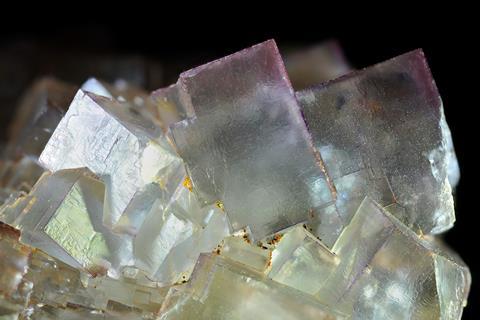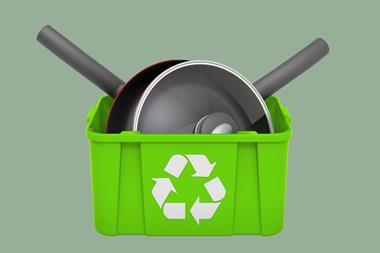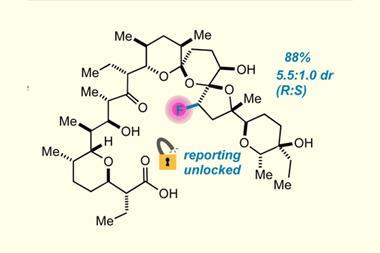A new technique for making fluorochemicals bypasses the production of hydrogen fluoride (HF) gas. This could make fluorochemical production safer, and the researchers who developed the method say it also has the potential to streamline supply chains and decrease energy requirements, helping to lower the industry’s carbon footprint.
All of the fluorine atoms in fluorochemicals that are currently manufactured originate from the naturally occurring mineral calcium fluoride, which is also known as fluorspar. To produce fluorochemicals, fluorspar must be converted into HF through an energy-intensive process involving the reaction of acid-grade fluorspar with sulfuric acid at high temperatures.
However, HF is highly toxic and, despite strict safety protocols, several spill incidents have occurred, with damaging effects on the environment and, in some cases, fatal outcomes.
Because of this a team led by researchers from the University of Oxford, UK, set out to develop a safer and more sustainable fluorination method to enable academic researchers and industry to access fluorochemicals directly from fluorspar while avoiding the production of HF.

‘Fluorochemicals are prominent in all of our daily lives and have an enormous impact on society from medicines to materials,’ says Oxford-based PhD student Calum Patel. ‘But hydrogen fluoride has gained notoriety in the press more recently in the context of spillages and industrial accidents.’
‘Our aim is to really rethink the whole pipeline and rejuvenate fluorine chemistry. We’re a group interested in fluorine chemistry but [finding] methods to do it in a way that’s cleaner, cheaper, safer and more sustainable.’
The group’s investigation was inspired by the process of calcium phosphate biomineralisation, which is essential in the formation of bones and teeth.
‘Given [fluorspar’s] insolubility, we thought it was well suited to mechanochemistry – but mechanochemistry alone wouldn’t hold the answer to unlocking the fluoride from fluorspar, so we turned to nature to inspire how we would do this,’ Patel explains.
‘Calcium and phosphate undergo mineralisation to form bones and teeth,’ he adds. ‘Drawing inspiration from that, we wondered whether phosphate salt could be used to activate fluorspar to harvest out the fluoride to be used to prepare fluorochemicals.’
The team ball-milled acid-grade fluorspar with a potassium phosphate salt to produce a powdered form of activated fluorspar that can be used to fluorinate a wide range of organic molecules. The resulting powdered product, which the researchers called Fluoromix , enabled the synthesis of over 50 different fluorochemicals directly from CaF2, with up to 98% yield.
‘As simple as it is ingenious’
Tobias Ritter, Max Planck Institute for Coal Research
‘The plan is to rethink fluorine chemistry in general with sustainability in mind,’ says Oxford-based synthetic chemist Veronique Gouverneur, who led the project. ‘It’s not only the fact that you have to produce HF – it’s the fact that you have to transport HF from one manufacturing plant to another. And each time you move it from A to B, that costs energy, and it’s a dangerous chemical to transport. So the fact that now we can directly take acid grade fluorspar, and use that chemistry anywhere in academia and in industry, it really shortens the supply chain.’
‘If I just summarise it in one sentence: it is as simple as it is ingenious.’ says Tobias Ritter, who works on fluorination chemistry at the Max Planck Institute for Coal Research in Germany. ‘It’s one of these times when you look at a paper and say: “I wish I had come up with that idea”.’
‘What’s really cool about this [project] is that they take what everybody takes if they want to start fluorination chemistry – calcium fluoride – and then they circumvent the big barrier by giving the calcium something that it likes even better than fluoride – phosphate – and, they managed to do that by a mechanochemical process,’ notes Ritter, who was not involved in the project.
‘The big advantage [with this method] is that we can go directly from what we get out of the mines, without going through a high energy process,’ he adds.
References
C Patel et al, Science, 2023, 381, 302 (DOI: 10.1126/science.adi1557)

















No comments yet